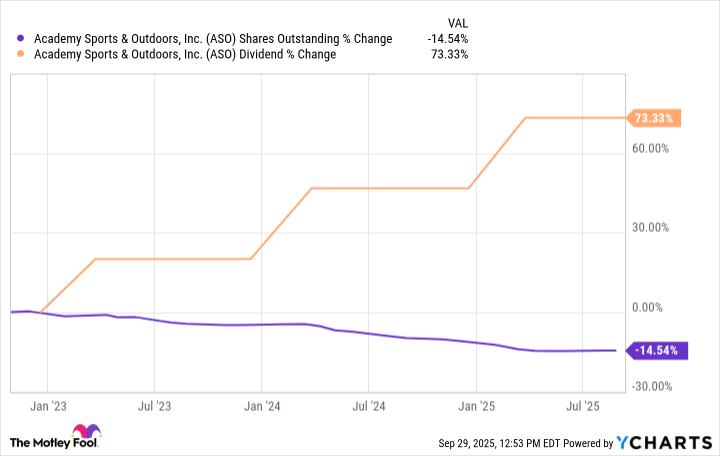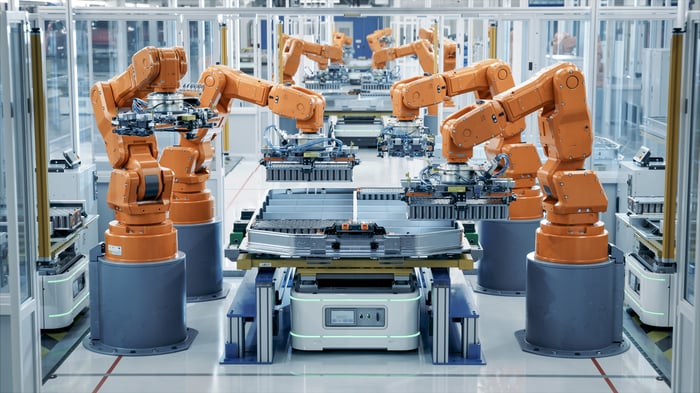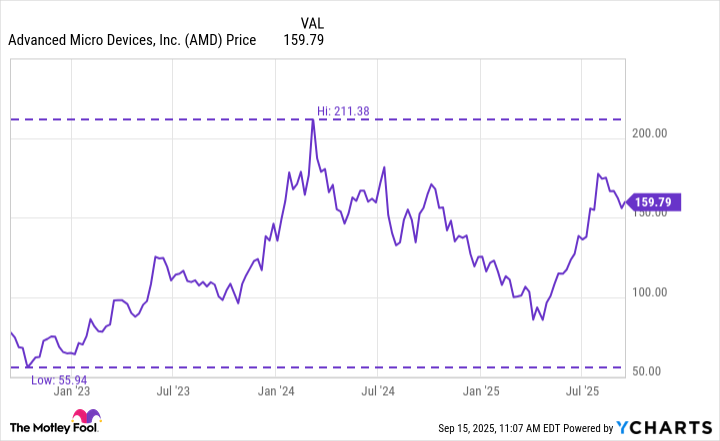3 Growth Stocks to Invest $1,000 In Right Now
When it comes to growth, it pays to pay up for quality.
You can make a little money go a long way, as long as you invest in the right growth stocks. The risks are understandably high. The valuations may seem outlandish today, but interesting things happen to stocks that are price for perfection when reality exceeds perfection.
I believe that Figma (FIG 7.74%), Axon Enterprise (AXON 0.90%), and Toast (TOST 0.85%) are three growth stocks to invest $1,000 right now. Let’s take a closer look.
1. Figma
Thrill seekers ride roller coasters over the summer. Investors looking for white-knuckled ups and downs found that in Figma. The developer of design tools for websites and mobile apps went public less than three months ago at $33. The IPO has not stood still. Figma traded as high as $143 out of the gate. It is trading 60% below that early August peak as of Monday’s close.
Figma hit the market checking all of the boxes and buzzwords that rightfully make growth investors tingly with wealth-altering potential. There are other cloud-based platforms that help spruce up and simplify digital offerings, and Figma isn’t the only one putting artificial intelligence (AI) front and center. It’s competitively priced, as low as $3 to as high as $90 a month for its premium subscriptions. Free starter accounts woo potential payers.

Image source: Getty Images.
You can’t be a growth stock without growth, and Figma delivers on that front. Revenue rose 48% last year. Canva — who could go public later this year — grew its top line at half of Figma’s clip in 2024. Canva is admittedly three times as a large as Figma in terms of revenue. Desktop publishing pioneer Adobe (ADBE 0.98%) competes with Figma and Canva with its Adobe XD vector design tool. It’s growing its overall business at a 10% to 11% pace for the fourth consecutive year.
Growth is slowing for Figma. Revenue rose 46% through the first three months of this year. Last month it announced 41% year-over-year growth for the second quarter, its first report as a public company. Don’t let that deter you from this opportunity to pick up Figma at a deep discount to its summertime high. Figma is now profitable. It’s also growing in popularity. Its customers are digging in with Figma. Its net dollar retention rate for customers with annual recurring revenue north of $10,000 is currently 129%. Put another way, major returning accounts are spending 29% more over the past year through Figma than the prior 12 months.
The stock isn’t cheap at 28 times trailing revenue and a forward earnings multiple approaching 200. This will scare many investors away and attract short sellers. Let it happen, Figma investors. When Canva surges on its IPO it will only draw more attention to the smaller player growing a lot faster.
2. Axon
If you’re comfortable with Figma-esque multiples, but want a more seasoned public company, Axon fits the bill. There’s a good chance that it has video evidence of its success. Axon is the leading provider of wearable body cameras used by law enforcement and other groups to record confrontations and events. It also runs Evidence.com, the cloud-based platform that stores its growing video files. Oh, it’s also still making its iconic TASER stun guns.
Axon is trading for 24 times revenue and 180 times earnings. It’s not for the squeamish, but it has always climbed the valuation wall of worry. It’s a 30-bagger over the past decade, and a still market-thumping 7-bagger over the last five years. It has earned the upticks. Annual revenue growth has topped 20% in each of the past 10 years, and business is actually picking up lately. This will be the third consecutive year of better-than-30% top-line growth. Customers pay Axon a premium for the security it provides. Investors pay a premium on Axon for the growth it provides.
3. Toast
Toast rounds out this list of companies providing tech tools to enhance the unlikely markets of site design, enforcement, and in this case restaurant stocks. Toast provides a cloud-based solution for eateries that is more than just the point-of-sale transaction settler that diners see. It helps operators manage everything including inventory, loyalty programs, table turns, and third-party delivery orders.
Success breeds success. Toast is becoming an essential investment in the cutthroat restaurant industry. The 148,000 different locations it’s currently serving is a 24% jump over the past year. There are currently challenges for the industry, but wait until Toast’s growth is more than just its expansion rate. The secret sauce to Toast is when operators dig deeper into its growing ecosystem. When the eatery space bounces back, Toast will spring even higher. The valuation multiples are lower than Figma and Axon, but is has the same scalability and dynamic runway for growth. Order up.
Rick Munarriz has positions in Axon Enterprise and Toast. The Motley Fool has positions in and recommends Adobe, Axon Enterprise, and Toast. The Motley Fool has a disclosure policy.





























